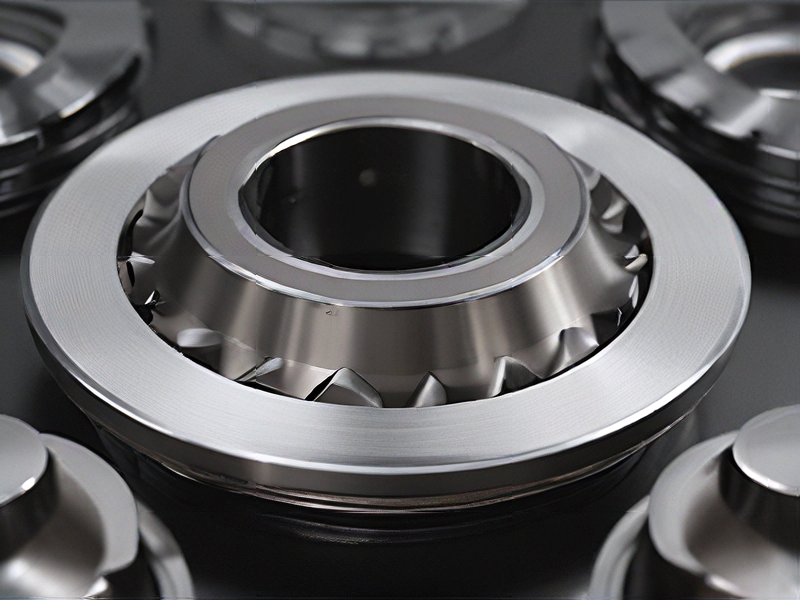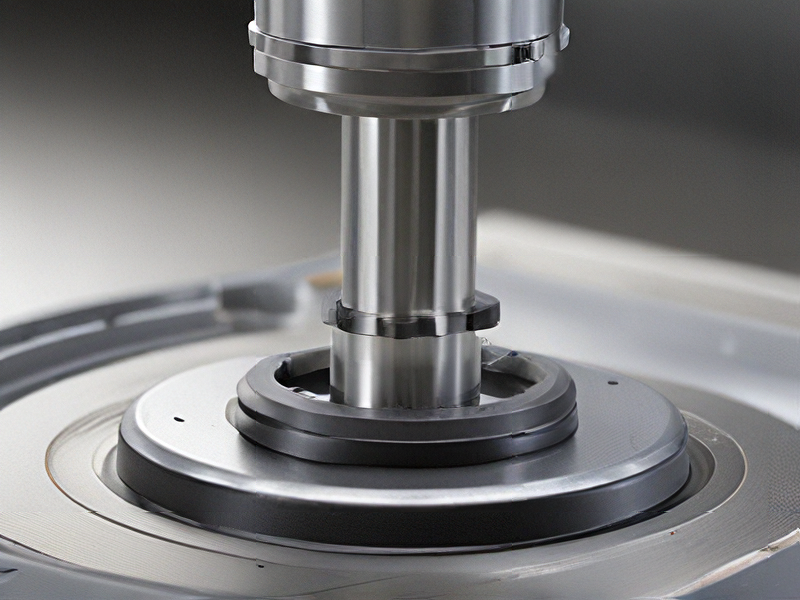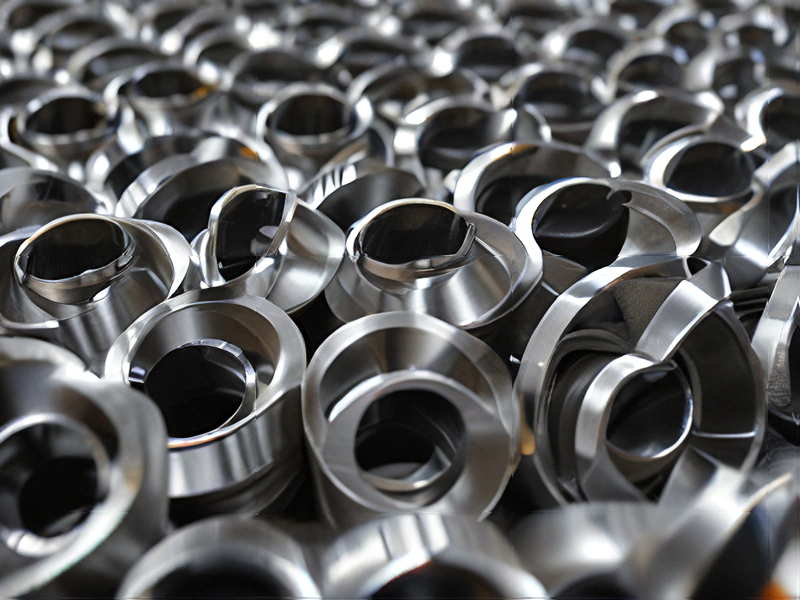Technology and Applications of metal spinnings
Technology and Applications of Metal Spinning
Technology:
Metal spinning, also known as spin forming or spinning, is a metalworking process where a disc or tube of metal is rotated at high speed and formed into an axially symmetric part using a tool. This technique can be performed manually or with CNC (Computer Numerical Control) machines for higher precision and repeatability. The process involves three main steps: clamping the metal blank, spinning it with a mandrel or die, and shaping it with a roller or other forming tools. Materials commonly used include aluminum, stainless steel, copper, and brass.
Applications:
1. Aerospace: Metal spinning is essential in producing lightweight, high-strength components such as rocket nose cones, satellite dishes, and jet engine parts. The precision and durability of spun metal are crucial for the safety and performance of aerospace technology.
2. Automotive: The process is used to manufacture components like wheel rims, hubcaps, and gas cylinders. Metal spinning ensures these parts are both strong and lightweight, contributing to vehicle efficiency and performance.
3. Lighting: Spun metal reflectors and housings are common in the lighting industry. The technique allows for the creation of complex shapes that enhance light distribution and fixture aesthetics.
4. HVAC: The HVAC industry utilizes metal spinning to create components like ventilation ducts, fan housings, and air distribution systems. The seamless and smooth surfaces achieved through spinning improve airflow and system efficiency.
5. Medical Devices: Metal spinning is used to manufacture parts for medical equipment, such as surgical instruments, medical gas cylinders, and components for diagnostic devices. The precision and clean finishes are vital for medical applications.
6. Consumer Goods: This process is also prevalent in producing kitchenware (pots, pans, and bowls), musical instruments (cymbals, bells), and decorative items (vases, lampshades). The ability to produce durable, aesthetically pleasing items makes metal spinning a versatile manufacturing method.
Metal spinning’s adaptability to various materials and applications makes it a valuable technique across many industries, offering a balance of strength, precision, and efficiency.

Quality Testing Methods for metal spinnings and how to control quality
Quality testing for metal spinnings involves several methods to ensure the components meet specified standards and perform reliably. Key testing methods include:
1. Visual Inspection: The simplest and most immediate form of quality control, visual inspection identifies surface defects such as cracks, dents, or discolorations.
2. Dimensional Inspection: Using tools like calipers, micrometers, and coordinate measuring machines (CMM), this method ensures the spun metal parts meet the precise dimensions and tolerances specified in the design.
3. Non-Destructive Testing (NDT): Methods such as ultrasonic testing, magnetic particle inspection, and dye penetrant testing detect internal and surface defects without damaging the part.
4. Mechanical Testing: Tests such as tensile, hardness, and impact tests evaluate the material’s mechanical properties to ensure they meet the required strength and durability standards.
5. Surface Roughness Measurement: Tools like profilometers measure the surface finish to ensure it meets the desired specifications for the part’s application.
6. Thickness Measurement: Ultrasonic thickness gauges or micrometers measure the uniformity and consistency of the part’s thickness.
To control quality effectively:
1. Standard Operating Procedures (SOPs): Implementing detailed SOPs ensures consistent processes and adherence to quality standards.
2. Regular Calibration of Equipment: Ensuring measurement and testing equipment are regularly calibrated maintains accuracy and reliability in quality control processes.
3. Training and Certification: Regular training for personnel on the latest quality control techniques and certifications ensures they are skilled and knowledgeable.
4. Statistical Process Control (SPC): Using SPC techniques, such as control charts, helps monitor and control the production process, identifying trends and preventing defects before they occur.
5. Supplier Quality Management: Regular audits and quality checks of suppliers ensure the raw materials meet the necessary standards before they enter the production process.
By integrating these methods and controls, manufacturers can maintain high standards of quality in metal spinnings, ensuring reliability and customer satisfaction.

Tips for Procurement and Considerations when Purchasing from metal spinnings
When procuring from metal spinning suppliers, several key considerations can ensure quality and cost-effectiveness. Here are some tips:
1. Supplier Evaluation: Assess potential suppliers based on their experience, certifications, and reputation in the metal spinning industry. Ensure they comply with relevant standards and have a proven track record.
2. Material Selection: Choose appropriate materials based on the intended application. Consider factors like strength, corrosion resistance, and weight. Common materials include aluminum, stainless steel, and copper.
3. Design Collaboration: Work closely with the supplier during the design phase to optimize the manufacturability of the part. Early collaboration can help identify potential issues and reduce costs.
4. Quality Assurance: Implement stringent quality control measures. Verify that the supplier has robust inspection processes, such as dimensional checks and material testing, to ensure parts meet specifications.
5. Volume and Lead Time: Consider the supplier’s capacity to handle your order volume and meet your delivery timelines. Discuss lead times and ensure they align with your project schedule.
6. Cost Analysis: Conduct a thorough cost analysis, including material, labor, and transportation costs. Compare quotes from multiple suppliers to ensure competitive pricing without compromising quality.
7. Technology and Capabilities: Ensure the supplier has the necessary technology and capabilities, such as CNC machining and automated spinning, to produce complex and precise parts.
8. Sustainability: Evaluate the supplier’s commitment to sustainability. Consider their waste management practices and use of eco-friendly materials.
9. Supply Chain Reliability: Assess the reliability of the supplier’s supply chain. Ensure they have contingency plans to handle disruptions and can maintain consistent production.
10. Communication: Maintain open and clear communication with the supplier. Regular updates and feedback loops are essential to address any issues promptly and ensure smooth procurement.
By focusing on these considerations, you can enhance the efficiency and quality of your procurement process when dealing with metal spinning suppliers.

FAQs on Sourcing and Manufacturing from metal spinnings in China
FAQs on Sourcing and Manufacturing from Metal Spinnings in China
1. What is metal spinning?
Metal spinning, also known as spin forming, is a metalworking process where a disc or tube of metal is rotated at high speed and formed into an axially symmetric part. It’s used for creating round metal parts like cones, domes, and cylinders.
2. Why source metal spinnings from China?
China offers competitive pricing, advanced manufacturing capabilities, and a broad supplier base. Many Chinese manufacturers also comply with international quality standards, making them reliable partners for high-volume production.
3. How do I find a reliable supplier in China?
Use online directories like Alibaba, Global Sources, and Made-in-China. Attend trade shows like the Canton Fair, or work with sourcing agents. Check supplier credentials, certifications, and request samples to evaluate quality.
4. What factors should I consider when selecting a manufacturer?
Consider the manufacturer’s experience, production capacity, quality control processes, certifications (like ISO 9001), and customer reviews. It’s also important to assess their communication skills and responsiveness.
5. How can I ensure the quality of metal spinnings?
Request detailed product specifications and material certificates. Conduct factory audits and inspections. Use third-party inspection services to check the quality of products before shipment.
6. What are the typical lead times for production?
Lead times can vary based on order size and complexity, but generally, they range from 4 to 8 weeks. Custom designs or large orders may require additional time.
7. How do I handle logistics and shipping?
Work with a freight forwarder experienced in shipping from China. Choose between shipping methods like sea freight (cost-effective for large volumes) and air freight (faster but more expensive). Ensure all customs documentation is correctly handled.
8. Are there any risks involved in sourcing from China?
Common risks include quality control issues, communication barriers, and intellectual property concerns. Mitigate these risks by thorough vetting of suppliers, using contracts, and protecting your IP through patents and trademarks.
9. What payment terms are typically used?
Common payment terms include a deposit (30-50%) before production and the balance upon shipment. Letters of credit and escrow services can provide additional security.
10. How can I protect my intellectual property?
Register your patents and trademarks in China. Use non-disclosure agreements (NDAs) and work with legal experts familiar with Chinese IP laws.

